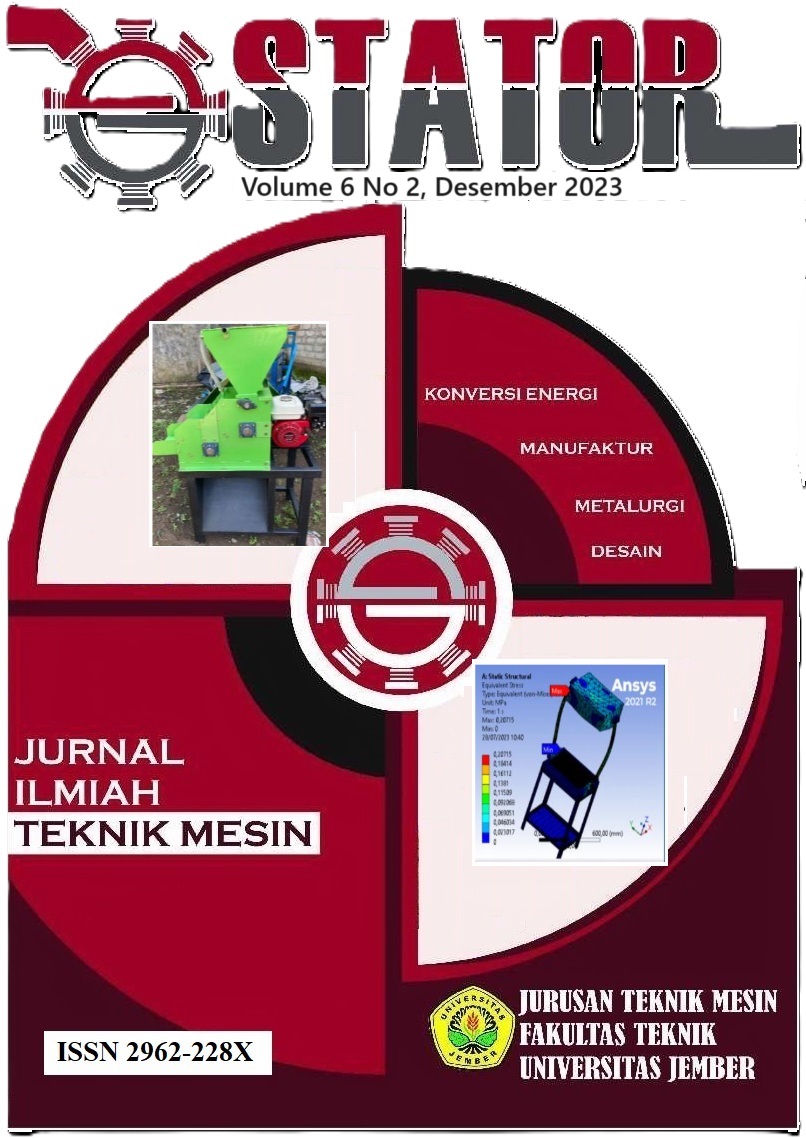ANALISIS KINEMATIKA PADA EMPAT JARI ROBOT XOSKELETON TERAPI STROKE
Abstract
Stroke is a disease or functional disorder of the brain in the form of nerve paralysis due to obstruction of blood flow to the brain which can be completely cured, cured with disabilities, or death. Rehabilitation is an effort to improve the quality of life of stroke survivors. However, rehabilitation with self-therapy has several drawbacks such as relatively expensive therapist costs, scheduled time, and limited resources. Therefore, technology is needed such as an exoskeleton robot that can be used by patients for therapy independently and practically. An exoskeleton robot or stroke therapy robot is a robotic framework system that is worn on the patient's joints to assist the patient in the rehabilitation process. For exoskeleton robots there are several kinds of mechanisms and for this study a cable and sheet transmission mechanism is used which is where the drive motors are separate so that they don't put too much of a burden on the user's hands. This research focuses more on the design of the index finger robot which represents the middle, ring, and little fingers. The method used is ansys rigid body dynamic simulation analysis by looking at position, speed, and acceleration. From the simulation results on the index finger exoskeleton robot design, the Range of Motion (ROM) of the flexion extension movement of the MCP joint is 62.17°, PIP 68.74°, and DIP 73.98°. The speed and acceleration of the three joints adjust the position and time coordinates that have been set during the simulation.
Keywords: Stroke, Rehabilitation, Exoskeleton, Index Finger, Range of Motion


